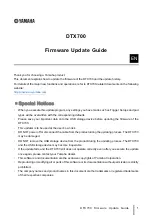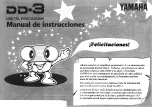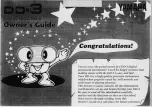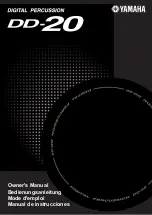
SAMPLING YOUR OWN SOUNDS
© E-mu Systems, Inc. 1985
Page 57
Enhanced by The Emulator Archive 2002 www.emulatorarchive.com
4E SETTING THE SAMPLE LENGTH
Once sampling starts, the SP-12 will normally sample until it runs out of memory or is
stopped (Section 4F). However, this function let’s you program a fixed sample time
up to 2.5 seconds; after this time has elapsed, the SP-12 will stop sampling.
1. With the SAMPLE module active, key in 5. The display’s top line indicates the
amount of time available for sampling (with a standard SP-12, this will be 1.2
seconds if the User Sounds are all empty). With the Turbo model, the
maximum settable sample length is 2.5 seconds. Therefore, even if you have
more than 2.5 seconds available, the display will indicate 2.5 seconds. Once
you have less than 2.5 seconds of sampling time left, the display will indicate
the maximum amount of time available for sampling.
2. Vary Slider #1 to change the sample length in 100ms(0.1 second) increments.
When the display confirms your choice, press ENTER. The sample length will
remain as set until changed, or until you select a different User Sound
number.
Notes:
The Turbo SP-12 is partitioned into two 2.5 second zones. Sounds cannot
“cross over” from one zone to the other. For example, if you record a 2.0 second
sound, then another 2.0 second sound, there will 0.5 seconds remaining in each
zone. You cannot record a 1.0 second sound at this point, although you can record
two 0.5 second sounds.
To check the remaining memory available for sampling, query the sample length as
described above.
4F INITIATING AND STOPPING SAMPLING
You’ve set the level, the threshold, the sample length, and assigned the sound to be
sampled to the right User Sound and output channel; now it’s time to sample. The
SAMPLE module must be active.
1. To initiate threshold-sensitive sampling, key in 7. The display’s top line says
“Sample Armed”, while the bottom line shows the moving-bar VU meter. As
soon as the level of the signal to be sampled exceeds the threshold, sampling
will begin. Sampling will stop at the end of the programmed sample length or
if the SP-12 runs out of memory.
2. Forced sampling is useful for situations where the signal to be sampled is
more or less continuous (continuous signals greatly complicate the threshold-
setting process described earlier). To initiate forced sampling, key in 9. The
display’s top line says “Sampling”, while the bottom line shows the moving-
bar VU meter. Sampling will stop at the end of the programmed sample length
or if the SP-12 runs out of memory.
3. After sampling is complete, the SP-12 will check the sample and one of two
messages will appear in the display’s top line. “Sample Overload” indicates
that the sound being sampled exceeded the SP-12’s headroom (however, this
sound is nonetheless available for use if desired). “Sample is good,” indicates
that no overload occurred.












































